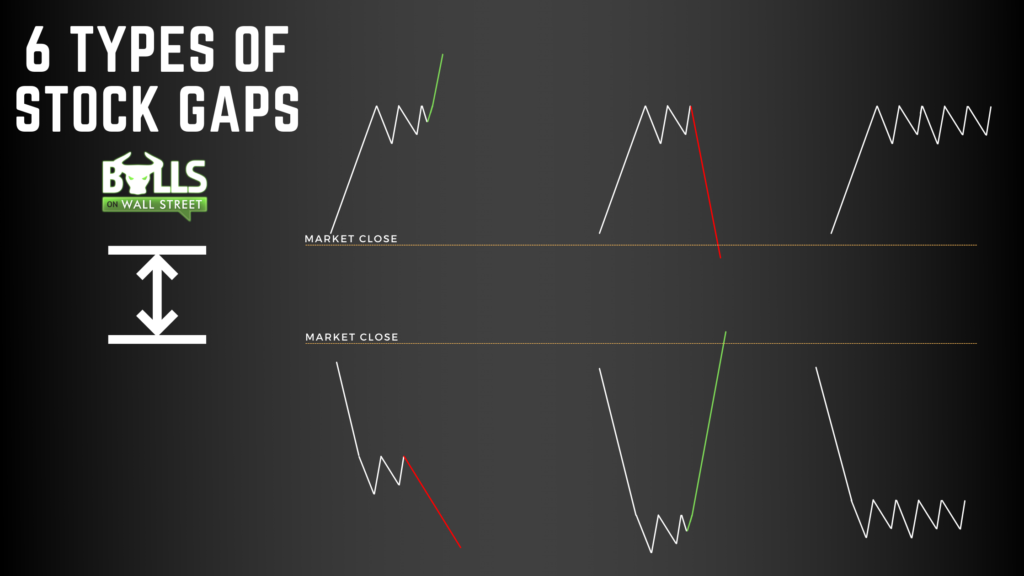Every day there are thousands of stocks gapping up and down.
Stocks gapping in pre-market offer some of the best opportunities for day trading and swing trading. No matter what type of trader or investor you are, you need to understand stock gaps.
Today we will give you an introduction to stock gaps, and the different ways stocks will behave.
Let’s start by defining what a stock gap is:
What is a Stock Gap?
A stock gap is simply a change in a stock’s price from its prior close. In pre-market and after-hours trading, stocks can rise and fall in price.
Sometimes press releases can cause large gaps in either direction, as a larger number of buyers and sellers enter the market.
It is called a “gap-up” when a stock trades higher than it’s prior closing price. For example, If Amazon $AMZN closes at $3200 and then opens the next day at $3300, that is a gap up.
It is called a “gap-down” when the opposite happens. If $AMZN closes at $3400 and opens at $3100, that is a gap down.
Now let’s get into the different types of patterns you will during a gap up or gap down:
Gap & Go

A gap & go is when a stock gapping up continues the upward momentum when the market opens. You see this kind of momentum when a stock gaps up over nearby by resistance levels, eliminating potential areas of supply to halt the stock’s uptrend. A stock gapping up to all-time highs is often the type of stock that
Gap & Crap

This is when a stock reverses strongly after the market opens after gapping up pre-market. Stock’s that do this will often fill their gap, and test nearby support levels from pre-market, and on the daily chart. A gap-and-crap will often occur when a stock has an especially large gap up, or gaps into resistance levels.
Gap Down Continuation

The opposite of a gap and go. This is where a stock continues its downward momentum from the pre-market. Typically stocks that gap down and continue lower gap below nearby support levels, eliminating potential areas of demand that would bring buyers back into the stock.
Gap Down Reversal

The opposite of a gap and crap. These reversals typically occur when a stock gaps down into areas of support, or it is strong uptrending stock.
Gap and Chop

Choppy stock gaps will typically occur after the merger and buy-out catalysts. We personally don’t recommend trading stocks with these type of catalysts. In general, we prefer to trade stock gaps that have liquid pre-market action, ideally forming a trend we can join at the market open.
Summary

Learn patterns to trade each type of stock gap (besides the chop!). If you want to see how we trade these types of gaps, register for our upcoming free chatroom day and watch veteran day trader Kunal Desai trade live on screen-share!



